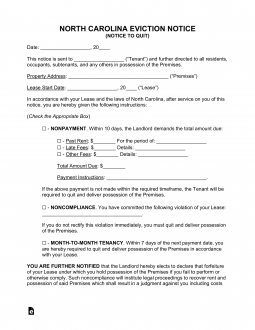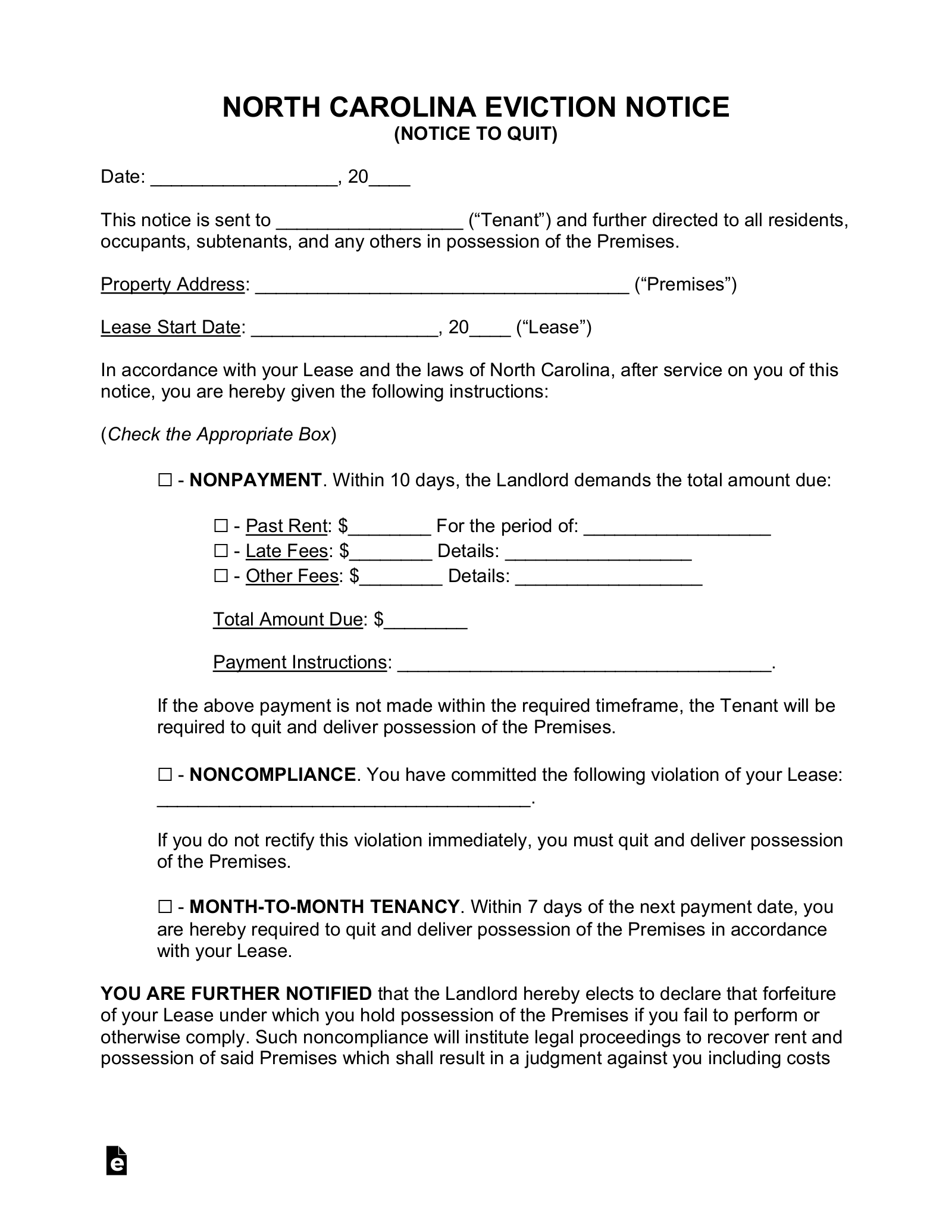Updated March 06, 2024
A North Carolina eviction notice is a document notifying a tenant about a lease violation that must be cured in order to avoid eviction. The tenant will have the statutory number of days to respond or fix the issue. If they don’t, the landlord can file an eviction proceeding (Summary Ejection) in the local county court.
By Type (3)
 10-Day Notice to Quit (Non-Payment of Rent) – Used when the tenant fails to pay rent. They must provide the unpaid rent within 10 days or move out. 10-Day Notice to Quit (Non-Payment of Rent) – Used when the tenant fails to pay rent. They must provide the unpaid rent within 10 days or move out.
Download: PDF, MS Word, OpenDocument |
 Immediate Notice to Quit (Non-Compliance) – Used when a tenant has damaged the property and the landlord seeks to have the tenant leave immediately. Immediate Notice to Quit (Non-Compliance) – Used when a tenant has damaged the property and the landlord seeks to have the tenant leave immediately.
Download: PDF, MS Word, OpenDocument |
 7-Day Notice to Quit (Month-to-Month Tenancy) – Used when the landlord seeks to end a month-to-month tenancy. 7-Day Notice to Quit (Month-to-Month Tenancy) – Used when the landlord seeks to end a month-to-month tenancy.
Download: PDF, MS Word, OpenDocument |
Table of Contents |
Court Forms
Complaint In Summary Ejectment – This form is used by the landlord to open an eviction case against a tenant and must be filed with the court associated with the location wherein the property is located.
Summons – Once a complaint has been filed, this document will be served to the tenant with proof of service. The Summons states the case being made against the tenant and gives them the opportunity to appear in court to fight the action.
Writ of Possession – If the tenant refuses to vacate the property, the landlord will need to obtain this form from the court to request the removal of the tenant.
How to Evict a Tenant (4 steps)
- Provide Notice to the Tenant
- File Complaint with Court / Serve Tenant
- Attend Court Hearing
- Receive Court Judgment
2. File Complaint with Court / Serve Tenant
If the tenant continues to reside on the premises after notice without correcting the issue, the landlord may proceed to file a Complaint for Summary Ejection in the Local County Court in which the property is located. Once the landlord has filed the document and paid the filing fee of $96,[9] the court will issue a summons.
The Summons and Complaint will be served on the tenant by the sheriff’s department, and the tenant will have to be in court no later than 10 days from the date of service.
4. Receive Court Judgment
If there is a judgment for the landlord, it is called a Judgment for Possession, and the tenant has 10 days to appeal or move out. If the tenant continues in possession, the landlord may seek a Writ of Possession, which will authorize the sheriff to remove the tenant.


